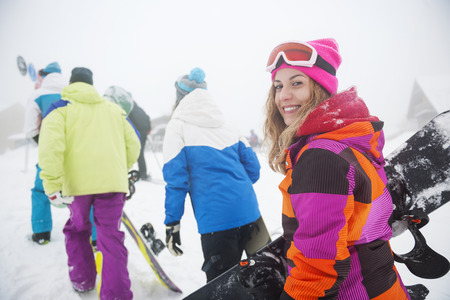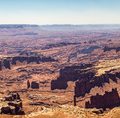Understanding Americas Diverse Climates
The United States is a vast country, stretching from the tropical beaches of Florida to the arid deserts of Arizona, and from the snow-capped mountains of Colorado to the rainy forests of the Pacific Northwest. This incredible range of geography means that America experiences an equally diverse array of weather conditions. In one part of the country, you might face blazing summer heat, while another region is dealing with heavy snowfall or severe storms. The Southwest is known for its dry, hot climate, making sun protection and hydration critical, whereas the Northeast often sees icy winters that demand warm clothing and sturdy boots. Because of this variety, preparing for America’s elements isn’t a one-size-fits-all approach. Understanding the specific climate challenges in your area—or any area you plan to visit—is essential for staying safe and comfortable. Whether youre gearing up for hurricane season in the Southeast or layering up for winter in the Midwest, regional preparedness ensures you’re ready for whatever Mother Nature throws your way.
2. Layering Basics: Dressing for Unpredictable Weather
When it comes to weather preparedness in the United States, mastering the art of layering clothing is essential. From the humid Southeast to the chilly Midwest and unpredictable Pacific Northwest, American weather is famous for its sudden changes. Layering not only provides warmth but also helps with moisture management and allows you to adapt your outfit as conditions shift throughout the day.
Why Layering Matters
The key benefit of layering is flexibility. By wearing several lightweight garments instead of one heavy piece, you can add or remove layers as temperatures rise or fall. This approach also helps wick away sweat, keeping you dry and comfortable during outdoor activities like hiking, tailgating, or attending fall football games.
Core Principles of Effective Layering
| Layer | Purpose | Common Materials | Tips |
|---|---|---|---|
| Base Layer | Moisture wicking; keeps skin dry | Synthetic fabrics (polyester), merino wool | Avoid cotton; choose snug fit |
| Mid Layer | Insulation; retains body heat | Fleece, down, synthetic insulation | Add/remove as needed for warmth |
| Outer Layer (Shell) | Weather protection; blocks wind/rain | Waterproof/breathable jackets (Gore-Tex), soft shells | Pick adjustable hoods and cuffs for versatility |
Adapting to American Climates
No matter where you are—from foggy San Francisco mornings to blustery Chicago winters—layering lets you stay comfortable and ready for anything. In places with drastic temperature swings, like Colorado or New England, this system is crucial. Always pack an extra layer in your backpack or car so youre prepared if the weather turns unexpectedly.
![]()
3. Essential Gear for Rain, Snow, and Heat
When it comes to weather preparedness in the United States, having the right gear is just as important as choosing proper clothing. America’s diverse climate means you may face everything from torrential rain and heavy snow to scorching summer sun—sometimes all within the same season. Below, we highlight must-have gear tailored to handle these extremes.
Waterproof Gear for Rainy Days
In regions prone to heavy rainfall like the Pacific Northwest or Gulf Coast, a high-quality waterproof jacket is essential. Look for jackets with breathable membranes such as Gore-Tex, which keep water out while allowing sweat to escape. Don’t forget waterproof pants and sturdy rain boots to keep your lower body dry when puddles are unavoidable. A compact umbrella and quick-dry backpack covers are also smart additions to your rainy-day arsenal.
Insulated Equipment for Snow and Cold
For those braving snowy winters in places like the Midwest or Northeast, insulated boots are a non-negotiable. Choose boots lined with materials like Thinsulate or shearling for warmth, and make sure they have slip-resistant soles to prevent falls on icy sidewalks. Pair these with thermal gloves, a thick beanie, and moisture-wicking wool socks to keep extremities warm and dry. Snow goggles can protect eyes from blowing snow and harsh sunlight reflected off ice.
Sun Protection for Hot Climates
In sunny states such as Arizona or Florida, sun protection gear is crucial year-round. Wide-brim hats offer shade for your face and neck, while polarized sunglasses reduce glare and protect your eyes from UV rays. Lightweight, long-sleeved shirts made from UPF-rated fabrics provide skin coverage without overheating. Don’t overlook a high-SPF sunscreen and a reusable water bottle with built-in insulation to stay hydrated during intense heat waves.
Adapt Your Gear to Local Conditions
No matter where you live or travel in America, tailoring your gear to local weather patterns will help you stay comfortable and safe outdoors. Investing in region-specific essentials ensures you’re always ready—whether you’re hiking through rain-soaked forests, shoveling snowy driveways, or enjoying summer festivals under the blazing sun.
4. Outdoor Activities: Specialized Apparel and Accessories
When it comes to enjoying America’s vast outdoor playgrounds, weather preparedness takes on a whole new level of importance. Whether you’re hiking the Appalachian Trail, skiing in Colorado, or camping in Yellowstone, specialized clothing and gear can make all the difference between an epic adventure and a miserable outing. Understanding how to dress for both the activity and the climate will help you stay safe and comfortable all year round.
Layering: The Key to Comfort and Safety
The foundation of outdoor apparel is layering. This technique allows you to adapt to changing weather conditions quickly by adding or removing layers as needed. Here’s a simple guide:
| Layer | Purpose | Recommended Materials |
|---|---|---|
| Base Layer | Moisture wicking; keeps sweat off your skin | Merino wool, synthetic fibers (not cotton) |
| Insulation Layer | Traps heat; provides warmth | Fleece, down, synthetic fill |
| Outer Layer (Shell) | Protects from wind, rain, snow | Waterproof/breathable fabrics (e.g., Gore-Tex) |
Selecting Activity-Specific Gear
Hiking
Select sturdy, moisture-wicking socks and supportive footwear with good tread. Opt for lightweight, packable rain jackets and always carry a hat for sun protection. Trekking poles can provide stability on uneven terrain.
Skiing & Snowboarding
A waterproof, insulated jacket and pants are essential. Don’t forget thermal gloves, goggles with UV protection, and a helmet for safety. Base layers should offer excellent moisture management to keep you dry during intense activity.
Camping
Packing for camping means preparing for temperature swings. Bring warm sleeping clothes, insulated jackets for chilly nights, and quick-dry attire in case of rain. Always include a weather-resistant tent and a ground tarp to protect from dampness.
Quick Tips for Staying Safe Outdoors
- Always check the weather forecast before heading out.
- Avoid cotton clothing; it retains moisture and increases risk of hypothermia.
- Packing extra dry layers in a waterproof bag can be a lifesaver.
By matching your apparel and accessories to your chosen outdoor pursuit—and being ready for America’s ever-changing elements—you’ll maximize both enjoyment and safety during every adventure.
5. Cultural and Practical Tips for Weather Preparedness
Embracing Local Wisdom: Everyday American Habits
Weather preparedness in the United States goes beyond just owning the right gear—it’s about adopting local habits and staying alert to changing conditions. Americans often check the weather forecast first thing in the morning, using popular apps like The Weather Channel or AccuWeather. A common phrase you’ll hear is “Dress in layers,” which means wearing several light pieces of clothing that can be added or removed as temperatures change throughout the day. This approach is especially popular in regions with variable climates, such as the Midwest or Northeast.
Shopping Smart: Where and How to Buy Weather Gear
When it comes to shopping for weather-appropriate clothing and gear, many Americans turn to stores like REI, Dick’s Sporting Goods, or even big-box retailers like Walmart and Target. Shopping during seasonal sales—like Black Friday or end-of-season clearances—can help you score high-quality jackets, boots, or rain gear at lower prices. Don’t forget to look for local outdoor outfitters if you’re in an area known for hiking, skiing, or other outdoor activities; staff often share valuable advice tailored to regional conditions.
Common Phrases and Expressions for Staying Ready
Understanding everyday American lingo can make it easier to blend in and communicate about weather readiness. Besides “dress in layers,” you might hear people say “bundle up” when it’s cold (meaning put on warm clothes), or “grab your rain gear” before a storm (referring to waterproof coats, boots, and umbrellas). During heat waves, phrases like “stay hydrated” and “beat the heat” are commonly used reminders to drink water and seek shade.
Practical Strategies for Every Season
No matter where you are in America, some practical strategies always apply: keep an emergency kit in your car (especially important in winter), have a backup power source for storms, and stay connected by signing up for local weather alerts. Many households maintain a “go bag” with essentials like flashlights, batteries, snacks, and a spare phone charger—habits rooted in readiness for anything from hurricanes to blizzards. By following these cultural cues and integrating them into your routine, you’ll be better prepared for whatever America’s elements throw your way.
6. Emergency Kits: What Every American Home and Car Should Have
Why Emergency Kits Matter in the U.S.
America’s diverse climate—from hurricane-prone coasts and wildfire-vulnerable forests to snow-blanketed northern states—makes it essential for every household and vehicle to be ready for sudden weather events. Having well-equipped emergency kits is a proactive step that not only protects your family but also gives you peace of mind during unpredictable situations.
Essentials for Home Emergency Kits
When assembling a home emergency kit, focus on items that address the most likely threats in your region. For hurricanes or blizzards, include enough non-perishable food and drinking water to last at least 72 hours per person. Pack extra weather-appropriate clothing such as thermal layers, waterproof jackets, and sturdy boots. Flashlights, headlamps, and extra batteries are must-haves in case of power outages. Don’t forget a NOAA weather radio to stay updated on alerts even if cell service fails. Include first aid supplies, personal hygiene items, copies of important documents in waterproof containers, and necessary medications. If you live in wildfire-prone areas, consider N95 masks and goggles to protect against smoke and ash.
Car Emergency Kit Basics
Whether you’re navigating icy roads or evacuating during a storm, a car emergency kit can make a critical difference. Start with basic supplies: bottled water, energy bars or snacks, blankets or sleeping bags for warmth, and rain ponchos. A multi-tool, flashlight with spare batteries, jumper cables, and a small shovel are practical additions. In winter climates, add an ice scraper, kitty litter or sand for traction, and hand warmers. Keep a phone charger (preferably solar-powered), reflective warning triangles or road flares for visibility, and a printed map in case GPS fails.
Customizing Your Kit for Local Risks
No two regions face exactly the same hazards. Floridians should prioritize waterproof storage for valuables and extra insect repellent for post-hurricane conditions. Californians might add fire extinguishers and fire blankets due to wildfire risks. Northeasterners should stock up on snow melt, heavy gloves, and insulated outerwear. Always review local guidance for specific recommendations tailored to your area’s threats.
Preparedness Is Empowerment
While we can’t control the weather, we can control how prepared we are when it strikes. Regularly check expiration dates on food, batteries, and medications; update your kit seasonally; and involve all family members in preparedness planning. By customizing your home and car kits to fit America’s varied elements, you’ll be ready to face whatever Mother Nature brings your way.


